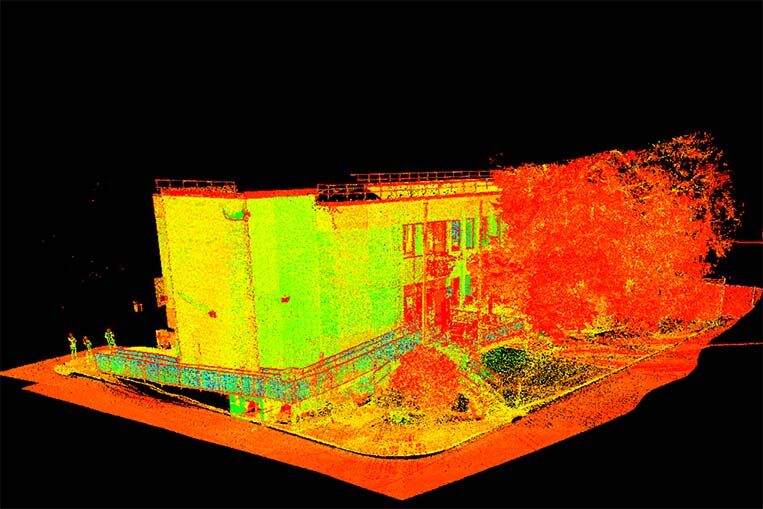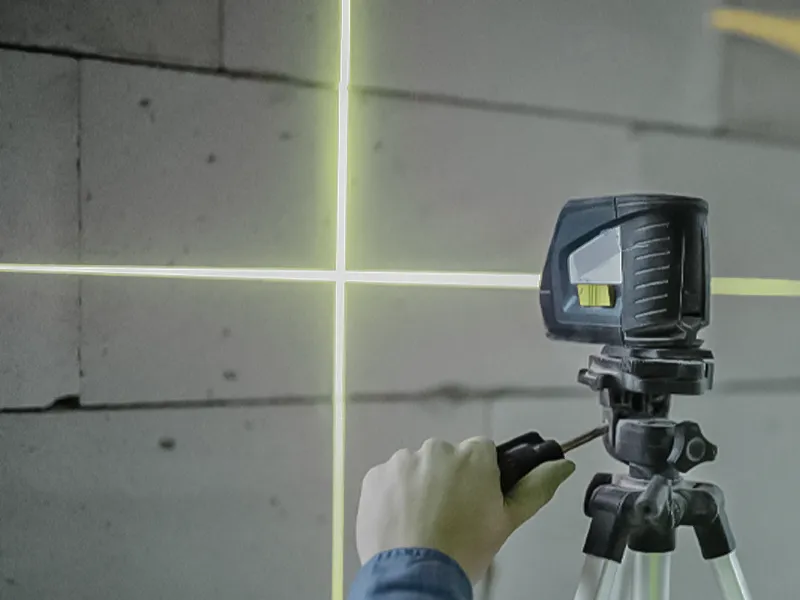Checking out the Applications of 3D Laser Scanning in Archaeology and Cultural Heritage Conservation
The integration of 3D laser scanning modern technology in archaeology and cultural heritage preservation notes a significant innovation in how archaeological sites and artefacts are documented and examined. This non-invasive method supplies accurate spatial information, revealing detailed details that were formerly hard to record. As the applications of this modern technology remain to evolve, numerous ramifications for education and learning, preservation, and documentation emerge, inviting additional exploration right into its transformative effect on the area.
Recognizing 3D Laser Scanning Modern Technology
3D laser scanning modern technology has actually revolutionized the field of archaeology by providing in-depth and exact spatial data. This sophisticated innovation utilizes laser beams to capture millions of information points from an object or site, creating a very exact three-dimensional depiction (3D Scanning). The resulting factor clouds can reveal elaborate details of historical sites, structures, and artefacts that may be unseen to the nude eye
Utilizing this technology, excavators can record the precise dimensions, forms, and placements of things with unmatched accuracy. This approach lessens the danger of human error and removes the demand for considerable hands-on measurements. In addition, the information collected can be assessed and shared quickly, facilitating cooperation among scientists. By incorporating 3D laser scanning with GIS and other electronic devices, excavators boost their ability to picture and translate historical contexts, leading to deeper understandings into old cultures and atmospheres.
Enhancing Historical Paperwork
3D laser scanning greatly improves historical documentation with its capacity to create precise website maps. This technology assists in comprehensive artifact evaluation, offering understandings that typical techniques might forget. On top of that, it ensures the conservation of contextual information, which is necessary for comprehending the connections within historical sites.
Exact Site Mapping
While conventional mapping techniques often battle with catching the complex information of historical websites, progressed laser scanning modern technology offers an innovative method to precise website mapping. This technique allows excavators to develop extremely outlined and exact three-dimensional depictions of websites, showcasing topographical variations and structural functions with exceptional integrity. The capability to capture numerous information points in a matter of minutes enables comprehensive documentation, which can be easily upgraded and shared amongst scientists. Furthermore, laser scanning helps with the measurement of intricate geometries that would certainly be tough to examine utilizing conventional tools. As an outcome, this modern technology improves the accuracy of website maps, adding significantly to the preservation and understanding of social heritage resources.
Detailed Artefact Analysis
Laser scanning technology greatly boosts the analysis of archaeological artefacts, offering scientists with unmatched detail and precision. This method records complex surface textures, measurements, and features that typical documentation strategies might neglect. By generating high-resolution 3D versions, scholars can carefully take a look at artifacts without the threat of damages inherent in physical handling. This precision enables better relative researches, enabling professionals to recognize production techniques, stylistic variants, and possible cultural importance. Moreover, the ability to control and envision data in 3 dimensions helps with a deeper understanding of artefact performance and usage. In general, laser scanning cultivates a much more complete method to historical documentation, making sure that essential information regarding artifacts is protected for future research study and education.
Conservation of Contextual Information
Preserving contextual data is essential for enhancing archaeological documents, as it assures that findings are understood within their original environmental and social structures. 3D laser scanning innovation greatly adds to this preservation initiative by catching comprehensive spatial relationships amongst artefacts, structures, and their settings. By creating accurate 3D versions, excavators can record the exact areas and alignments of objects in situ, facilitating an extensive understanding of their context. This innovation enables researchers to take another look at and analyze websites long after excavation, preserving the stability of contextual info. On top of that, digital documents created with scanning can be shared around the world, cultivating collaborative research and public interaction. Eventually, protecting contextual data through 3D laser scanning enriches historical stories and advertises a much more profound admiration of cultural heritage.
Preservation of Cultural Heritage Sites
As developments in technology proceed to evolve, the preservation of cultural heritage sites has actually become increasingly reliant on ingenious methods such as 3D laser scanning. This innovation enables the detailed paperwork of landscapes, structures, and artifacts, recording their exact measurements and spatial connections in a non-invasive way. By creating high-resolution 3D versions, researchers can evaluate and check deterioration patterns, allowing aggressive conservation strategies.
Furthermore, 3D laser scanning promotes the sharing of thorough site data with the global area, promoting cooperation amongst archaeologists, preservationists, and historians. These models work as indispensable sources for education and learning and public engagement, increasing recognition of cultural heritage issues. The electronic documents developed can secure versus loss due to ecological elements, vandalism, or neglect. On the whole, 3D laser scanning stands for a transformative approach to the conservation of cultural heritage, ensuring that these websites can be studied and valued by future generations.

Restoration and Reconstruction Efforts
The detailed paperwork attained with 3D laser scanning plays a substantial duty in reconstruction and reconstruction efforts within archaeology. This technology offers accurate dimensions and high-resolution imagery, permitting accurate electronic models of structures and artifacts. These models offer as essential referrals during remediation procedures, enabling archaeologists to visualize the original style and make educated choices about strategies and products needed for repair.
In addition, 3D laser scanning facilitates the reconstruction of harmed or shed aspects by producing detailed replicas. This procedure aids review in making certain that restorations keep historic honesty while also permitting innovative strategies to recover websites. The capability to analyze wear patterns and structural weak points through scanned data enhances understanding of a site's historic context and its use gradually. Consequently, 3D laser scanning not only protects the physical aspects of social heritage yet likewise enriches the story of background, leading future remediation undertakings.
Educational and Research Opportunities
The integration of 3D laser scanning in archaeology opens significant academic and research study possibilities. Academic cooperations can boost the understanding of ancient sites, while specialized training workshops equip professionals with necessary skills for using this innovation. With each other, these efforts cultivate a richer interaction with historical practices and methods.
Academic Collaborations in Archaeology
Collective initiatives in archaeology have actually ended up being significantly important for progressing both academic and research possibilities. By cultivating partnerships among universities, study establishments, and cultural heritage organizations, these cooperations promote the exchange of knowledge and sources, improving the high quality of archaeological studies. Joint tasks often utilize varied expertise, enabling for cutting-edge methodologies and complete evaluations, specifically in the application of innovations like 3D laser scanning. Such collaborations additionally advertise interdisciplinary techniques, engaging fields such as geography, conservation, and background scientific research. Furthermore, scholastic partnerships frequently result in the growth of brand-new educational programs and training programs, preparing the future generation of archaeologists to successfully utilize innovative innovations in their job. Inevitably, these partnerships contribute to the preservation and understanding of cultural heritage.
Educating Workshops for Experts
Educating workshops for experts in archaeology are progressively essential for improving abilities in the application of sophisticated innovations such as 3D laser scanning. These workshops give participants with hands-on experience in using cutting-edge devices and software application, fostering a much deeper understanding of information capture and evaluation procedures. Specialists can learn to develop accurate electronic models of archaeological websites, which noticeably help in paperwork and conservation efforts. Furthermore, these training sessions frequently consist of discussions on finest methods and instance researches, advertising knowledge exchange among individuals. By investing in constant education and learning, professionals can stay upgraded on progressing technologies, ultimately improving the efficiency of their research study and cultural heritage preservation initiatives. find out here This commitment to skill enhancement is vital for advancing the area of archaeology.
Future Fads in 3D Laser Scanning for Archaeology
As developments in modern technology proceed to reshape numerous fields, the future of 3D laser scanning in archaeology promises to enhance both the precision and performance of website paperwork and evaluation. Arising fads indicate a growing combination of man-made intelligence and maker knowing, facilitating automated information processing and analysis. This advancement will allow archaeologists to examine complex datasets extra rapidly, bring about faster understandings into historical contexts.
The combination of drone technology with 3D laser scanning is most likely to expand, making it possible for thorough aerial surveys of archaeological websites that are challenging to access. The enhancing affordability of scanning equipment will certainly equalize access, encouraging smaller sized institutions and independent researchers to use these devices properly. In addition, advancements in digital fact and augmented truth will enable immersive experiences for public engagement and education and learning, making archaeological findings much more interactive and accessible. These fads collectively signify a transformative future for archaeology, boosting conservation efforts and expanding the technique's outreach.
Regularly Asked Concerns
Just How Much Does 3D Laser Scanning Tools Cost?

What Are the Limitations of 3D Laser Scanning?
The constraints of 3D laser scanning consist of high prices, prospective information processing challenges, sensitivity to environmental problems, and problem recording elaborate information in complex surface areas, which can influence the precision and efficiency of scanned representations. (3D Scanning)

Can 3D Laser Scanning Be Utilized Undersea?
Yes, 3D laser scanning can be used underwater, yet it needs specific equipment and techniques to overcome challenges such as water distortion and restricted exposure. Effective applications have been shown in marine archaeology and underwater surveys.
How much time Does a Scanning Task Usually Take?
A scanning task normally takes anywhere from a couple of days to a number of weeks, depending upon the complexity and size of the location being checked, in addition to the preparation and post-processing requirements associated with the job.
Exist Specific Software Application Demands for Handling 3D Checks?
Yes, specific software program requirements for refining 3D scans consist of programs efficient in taking care of big factor clouds, such as Autodesk ReCap, Cyclone, or More Help MeshLab. These devices promote analysis, visualization, and combination into different applications effectively.
The assimilation of 3D laser scanning modern technology in archaeology and social heritage preservation notes a considerable development in how historic sites and artefacts are recorded and analyzed. 3D laser scanning innovation has reinvented the area of archaeology by providing comprehensive and specific spatial data. As developments in technology continue to develop, the preservation of cultural heritage sites has actually become increasingly reliant on ingenious approaches such as 3D laser scanning. As improvements in modern technology continue to improve different fields, the future of 3D laser scanning in archaeology assures to improve both the precision and performance of website documents and analysis. The integration of drone modern technology with 3D laser scanning is likely to broaden, enabling detailed airborne studies of archaeological websites that are hard to access.